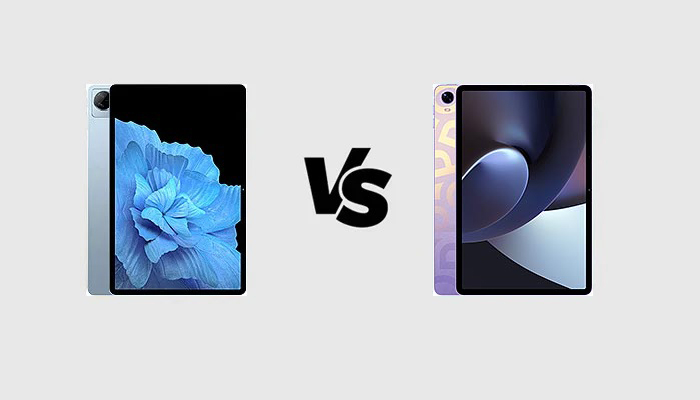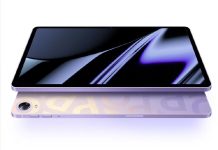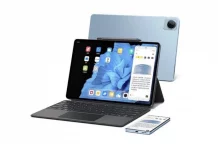After the success of tablet PCs during the pandemic, a lot of tech giants decided to focus more on this kind of device. Among these, there are the Chinese companies OPPO and Vivo: both the Green Factory and the Blue Factory launched their first tablets this year. Their names are very simple and obvious: OPPO Pad and Vivo Pad, respectively. They are two tablets placed in the same price range with similar specifications, that is the reason why it is hard to make a choice for a lot of people. Currently, these devices are on sale in China only: while waiting for their global debut, here is a comparison between the specifications of the Vivo Pad and the OPPO Pad.

Vivo Pad vs OPPO Pad
| Vivo Pad | OPPO Pad | |
|---|---|---|
| DIMENSIONS AND WEIGHT | 253.2 x 164.7 x 6.6 mm, 489 grams | 252.2 x 163.8 x 7.1 mm, 507 g |
| DISPLAY | 11 inches, 1600 x 2560p (Quad HD+), IPS LCD | 11 inches, 1600 x 2560p (Quad HD+), IPS LCD |
| PROCESSOR | Qualcomm Snapdragon 870, octa-core 3.2 GHz | Qualcomm Snapdragon 870, octa-core 3.2 GHz |
| MEMORY | 8 GB RAM, 128 GB – 8 GB RAM, 256 GB | 6 GB RAM, 128 GB – 6 GB RAM, 256 GB – 8 GB RAM, 256 GB |
| SOFTWARE | Android 12, OriginOS HD | Android 11, ColorOS |
| CONNECTIVITY | Wi-Fi 802.11 a/b/g/n/ac/ax, Bluetooth 5.2, GPS | Wi-Fi 802.11 a/b/g/n/ac/6, Bluetooth 5.1, GPS |
| CAMERA | Dual 13 + 8 MP f/2.2 + f/2.2 8 MP f/2.0 front camera |
Single 13 MP f/2.2 8 MP f/2.0 front camera |
| BATTERY | 8040 mAh, fast charging 44W | 8360 mAh, fast charging 33W |
| ADDITIONAL FEATURES | stylus support, keyboard support, reverse charging | Pen support, keyboard support, reverse charging |
Design
The front design of the OPPO Pad and the Vivo Pad is more or less the same: there is a wide rectangular display with a 16:10 aspect ratio surrounded by very narrow bezels on all the sides, covering more than 84% of the front panel. The rear sides are different as the OPPO Pad comes with a more original design (including a texture made with the OPPO letters on the left side) and no camera module, while the Vivo Pad has a bigger camera module because it comes with a higher number of sensors. The Vivo Pad is my favorite one not only because it has a full aluminum unibody design, but also because it is thinner and lighter than its rival.
Display
The displays of the OPPO Pad and the Vivo Pad come with the same specifications. Unfortunately, you do not get OLED panels with these tablets, so do not expect those vivid colors and deep blacks you can get on OLED panels. However, you can still get a great image quality as we are talking about great IPS panels. These displays come with a diagonal of 11 inches, a Quad HD+ resolution of 1600 x 2560 pixels, and a 120 Hz refresh rate for a smooth viewing experience. There are no fingerprint readers and no headphone jacks, but you get great stereo speakers. Both the panels support a stylus and both the tablets can be attached to a keyboard transforming the tablet into a mini 2-in-1.
Specs & Software
The hardware departments are the same as well: you get a Snapdragon 870 mobile platform by Qualcomm built at 6 nm and running at a max frequency of 3.2 GHz, up to 8 GB of RAM, and up to 256 GB of UFS 3.1 internal storage. There is only one single difference: the OPPO Pad does not support 5G connectivity, while you get optional 5G support on the Vivo tablet. The version of the operating system is different as well: on the Vivo device, there is Android 12 out of the box, while the OPPO Pad is still based on Android 11, even though it is customized by ColorOS 12. On the other hand, the ColorOS 12 comes with a very interesting feature that is Multi-Screen Connect, allowing you to achieve a seamless experience between your tablet and your PC.
Camera
If you are looking for a better camera setup, opt for the Vivo Pad. Besides a 13 MP main camera, it provides you with an 8 MP ultrawide sensor and it even supports 4K video recording. The OPPO Pad has just one single 13 MP rear camera and it records videos just with a 1080p resolution. The front cameras come with an 8 MP resolution and an f/2.0 focal aperture.
- Read More: Xiaomi Mi Pad 5 & Mi Pad 5 Pro Official: 11″, 120Hz refresh rate, 5G, MIUI for Pad & more!
Battery
The OPPO Pad is equipped with a bigger battery: the capacity is 8630 mAh against just 8040 mAh provided by the Vivo Pad. Given that the hardware components are the same (display and processor), the Vivo Pad will most likely provide a longer battery life in most scenarios. Last but not least, with the Vivo tablet you have a faster charging technology: the power is 44W against just 33W of the OPPO tablet.
Price
The starting price of the OPPO Pad in the Chinese market roughly translates into €330/$347, while you need about €360/$380 to purchase the Vivo Pad. Despite this price difference, Vivo’s first tablet wins the comparison because of its ultrawide camera, optional 5G connectivity, bigger battery, and faster charging.
Vivo Pad vs OPPO Pad: PRO and CONS
Vivo Pad
PRO
- Ultrawide camera
- HDR display
- Android 12 out of the box
- Thinner
- Optional 5G
- 4K video recording
- Faster charging
CONS
- Smaller battery
OPPO Pad
PRO
- Bigger battery
- More affordable
- Original design
CONS
- Inferior camera
RELATED







